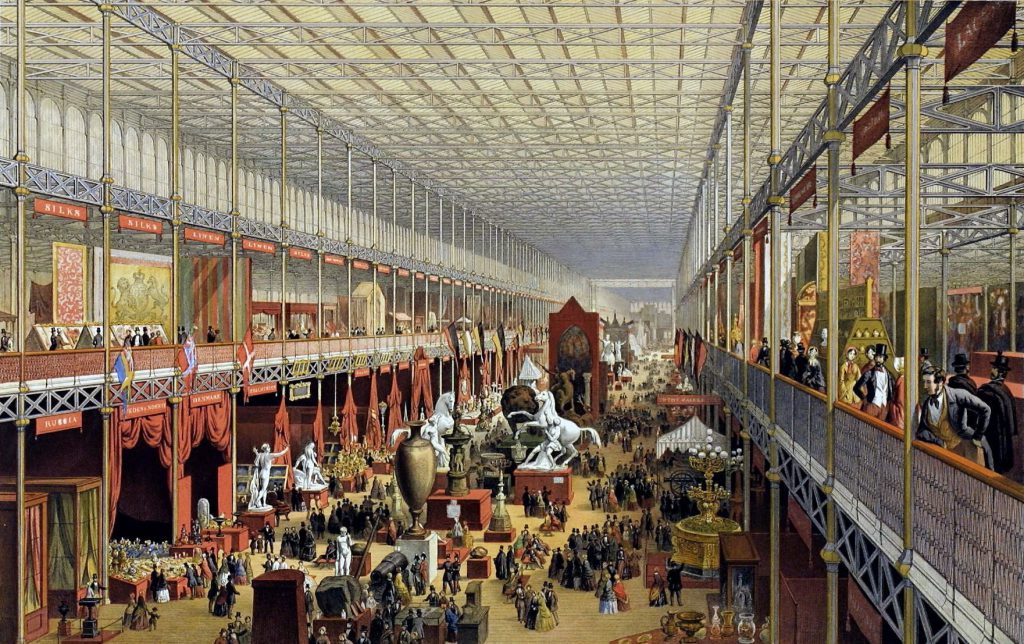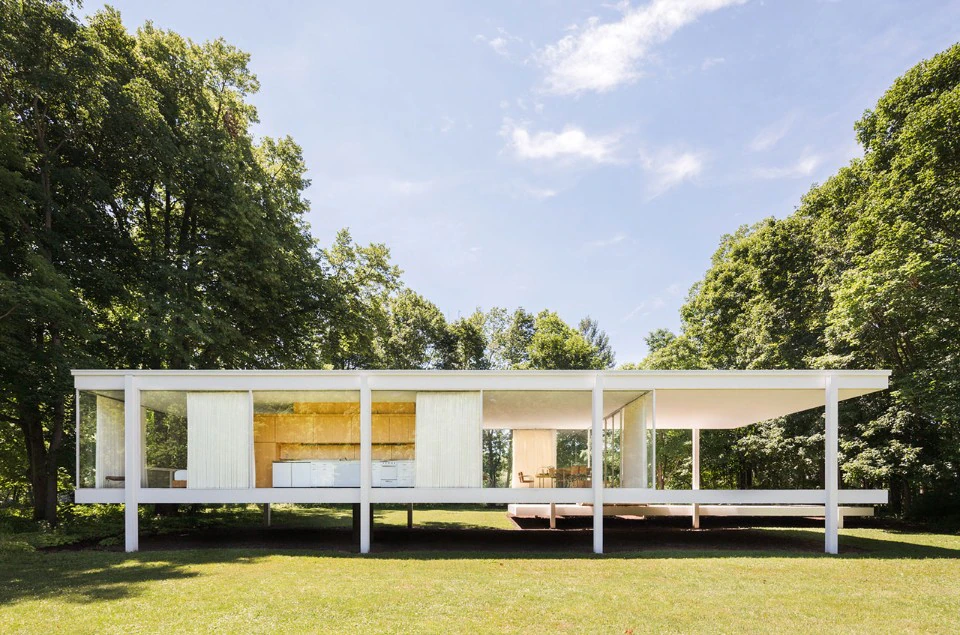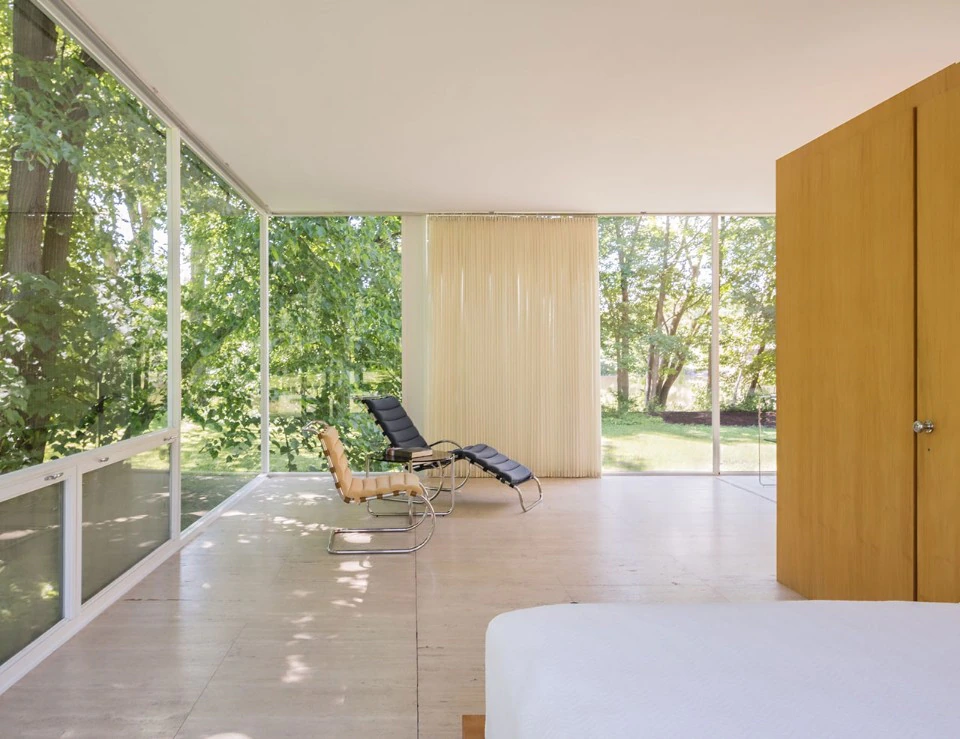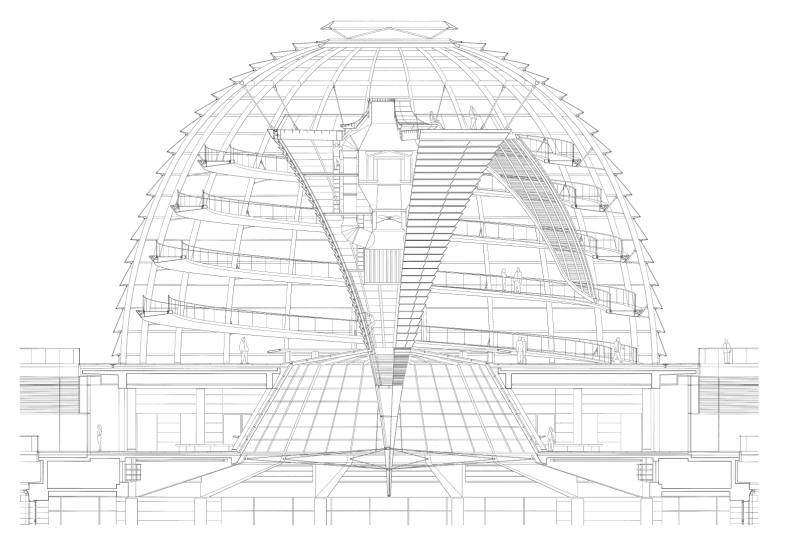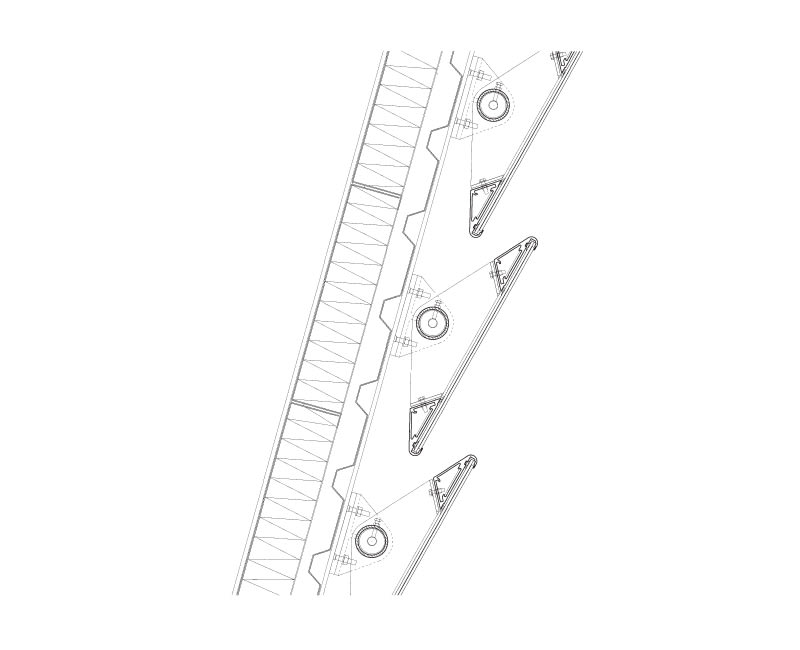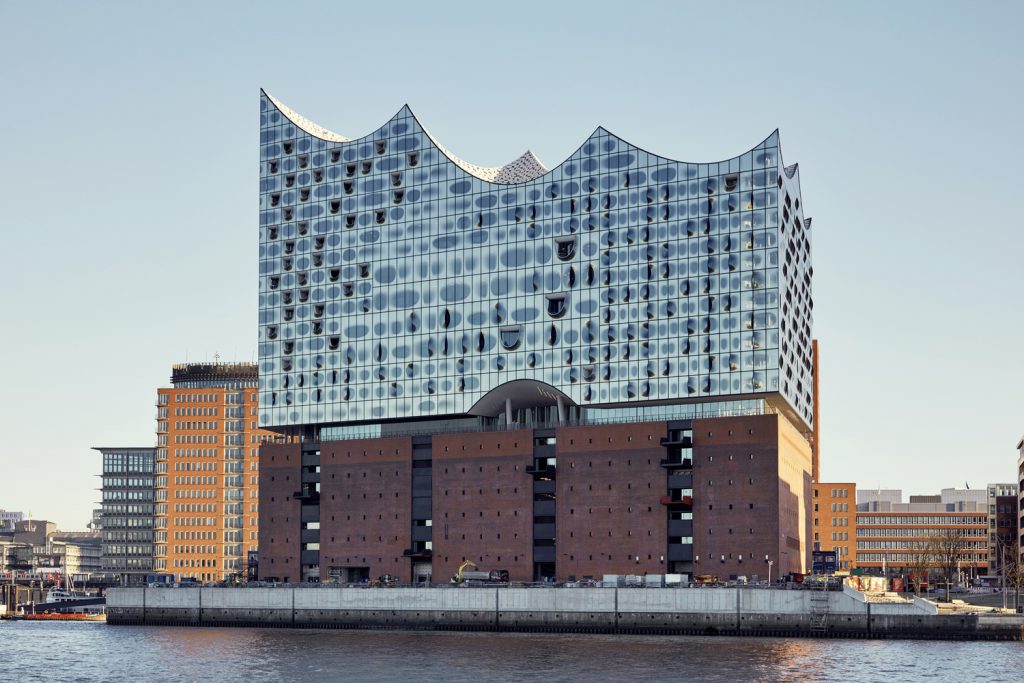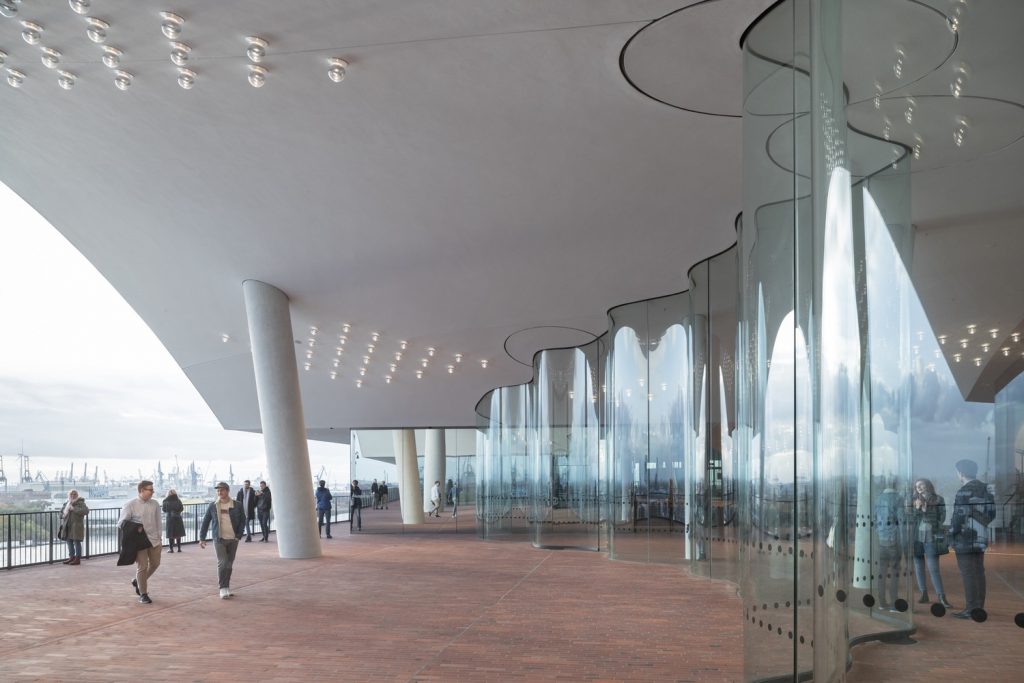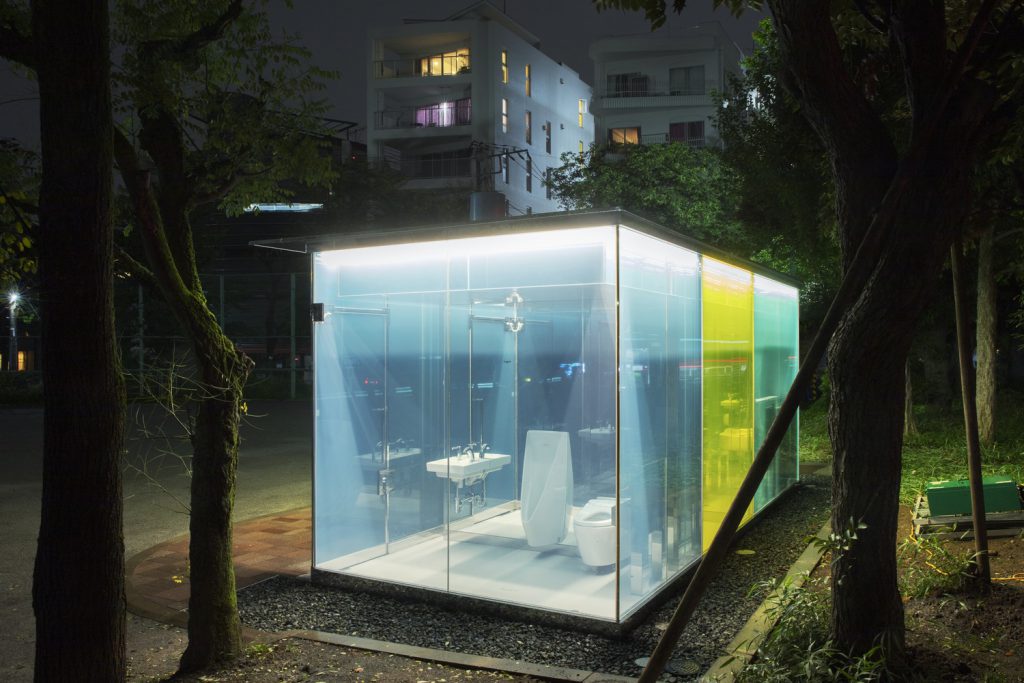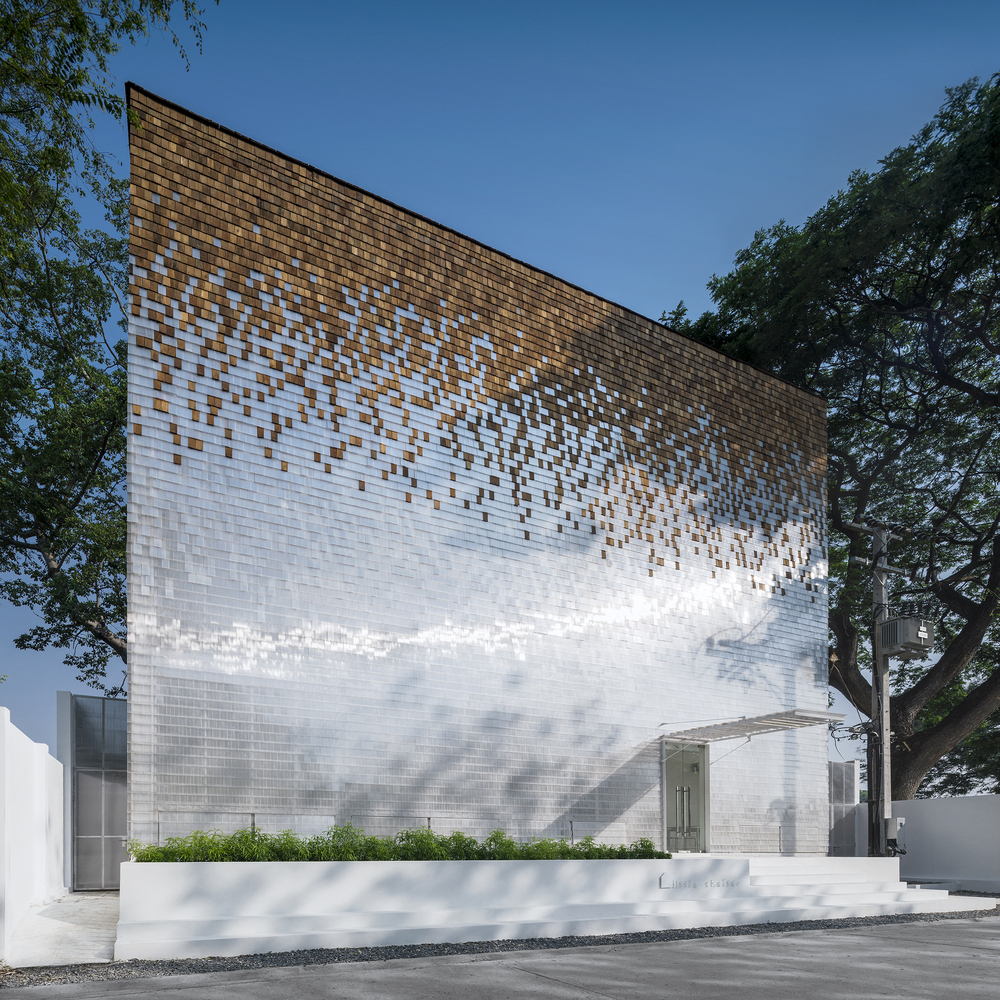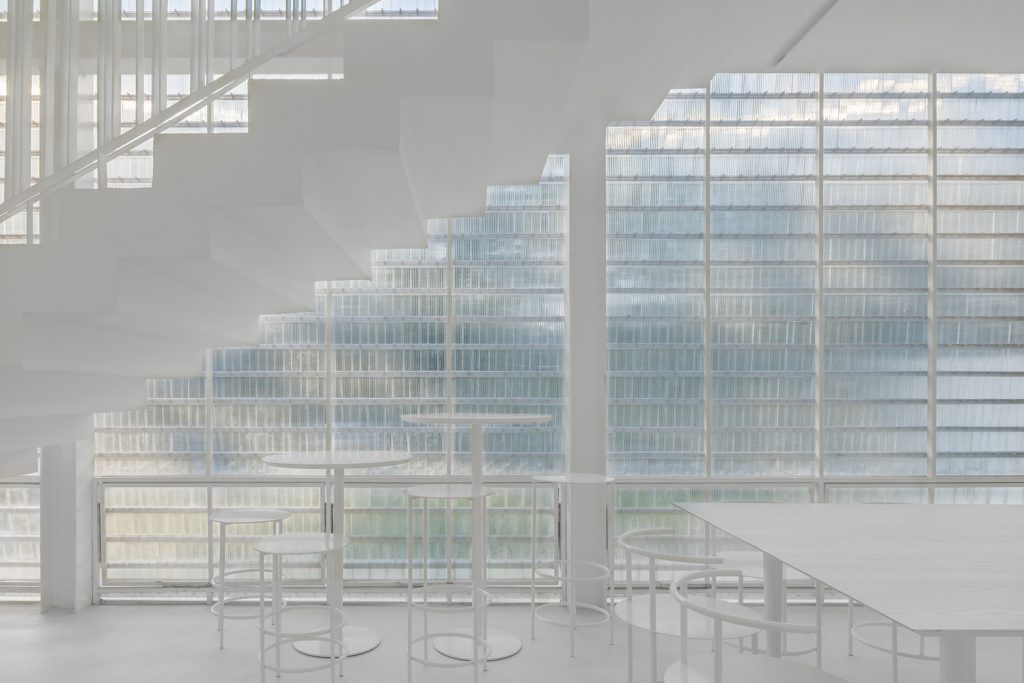In the era when architectural construction technologies weren’t advanced enough to enable full access to outside spaces and environments, walls were used to separate the interior from exterior. They served as a weight bearing system and allowed only limited openings in the form of wooden windows and doors, which when closed, completely disconnected interior spaces from the outside environment. Once humans invented glass to be used as a common, everyday object and developed the material to be thin and flat enough to use in architecture, glass has been used as openings whose ability to facilitate the connection between indoors and outdoors. It allows interior spaces to be exposed to more natural light, bringing a sense of liveliness to functional areas while simultaneously protecting users from the outside environment.
Text: Xaroj Phrawong
Download the online journal Issue 03 Seeing Through Click here
ในยุคที่เทคโนโลยีการก่อสร้างในงานสถาปัตยกรรมยังไม่ก้าวหน้าพอที่จะเปิดรับที่ว่างและสภาพแวดล้อมจากภายนอก ผนังที่ใช้เป็นทั้งตัวแบ่งพื้นที่ภายนอกและภายในเป็นระบบผนังรับน้ำหนักที่สามารถเปิดช่องเปิดได้เพียงเล็กน้อย และยังใช้หน้าต่าง ประตูไม้ ทำให้เมื่อปิดช่องเหล่านี้แล้วพื้นที่ภายในจะถูกตัดขาดจากภายนอกโดยสิ้นเชิง จนเมื่อมนุษย์ได้รังสรรค์แก้วขึ้นมาใช้เป็นสิ่งของในชีวิตประจำวัน และสามารถพัฒนาแก้วเหล่านี้ให้มีความบาง และแบนพอจะใช้ในงานสถาปัตยกรรม จึงเกิดการใช้กระจกที่ประกอบเข้ากับช่องแสงจนกลายเป็นส่วนสำคัญที่เชื่อมพื้นที่ภายนอกและภายในเข้าด้วยกัน อีกทั้งยังดึงปรากฏการณ์ธรรมชาติอย่างแสงเข้ามารังสรรค์ที่ว่างภายในให้มีชีวิตชีวามากขึ้น และยังคงปกป้องผู้ใช้อาคารให้ปลอดภัยจากสภาพแวดล้อมภายนอกได้ในขณะเดียวกัน

แม้ว่ามนุษย์จะรู้จักการใช้แก้วมาหลายพันปี แต่การนำมาใช้เป็นส่วนประกอบในงานสถาปัตยกรรมเริ่มเกิดขึ้นราว 800 ปีที่ผ่านมาในตะวันตก ส่วนใหญ่เป็นการทำกระจกแบบ stained glass ในโบสถ์ โดยความนิยมได้ลเลงในยุค Renaissance แล้วถูกนำมาใช้แพร่หลายขึ้นอีกครั้งในช่วง Gothic Revival ในศตวรรษที่ 19 จากนั้นความแพร่หลายของการใช้กระจกในสถาปัตยกรรมได้เพิ่มมากขึ้น อันเป็นผลพวงของการปฏิวัติอุตสาหกรรม จึงอาจกล่าวได้ว่ากระจกเป็นวัสดุที่มาพร้อมกับโลกสมัยใหม่ การนำกระจกมาเป็นวัสดุประกอบอาคาร จากที่แต่เดิมทำได้เพียงเล็กน้อยในตะวันตก เพราะด้วยสภาพอากาศหนาวเย็น แต่เมื่อมีการผลิตเครื่องทำความร้อน เทคโนโลยีการผลิตกระจกทำได้มากขึ้น ทำให้กระจกกับสถาปัตยกรรมสมัยใหม่เข้ากันได้เป็นอย่างดี ความสามารถในการเชื่อมโยงที่ว่างภายนอกและภายในสามารถทำได้เกินจินตนาการของสถาปนิกในศตวรรษก่อน มีเรื่องราวพัฒนาการของการมองทะลุผ่าน (Seeing Through) ที่น่าสนใจมากมายได้ปรากฏให้เราร่วมสำรวจ ผ่านจุดเปลี่ยนของเทคโนโลยี วัสดุ และแนวคิดในการสร้างสรรค์ความโปร่งใสในงานสถาปัตยกรรม
Photo Courtesy of Paul Furst Photo Courtesy of McNeven, J.
เมื่อ Joseph Paxton ออกแบบ Crystal Palace ขึ้นที่ลอนดอน ในปี 1851 เพื่อรองรับกิจกรรมแสดงงานครั้งใหญ่ที่แสดงถึงความก้าวหน้าล่าสุดทางเทคโนโลยีที่เกิดขึ้นระหว่างการปฏิวัติอุตสาหกรรม ด้วยแนวคิดในการก่อสร้างที่เริ่มจากสถาปนิกคิดระบบการประสานทางพิกัดจากกระจกขนาด 25×120 เซนติเมตร ที่ผลิตโดย Chance Brothers of Smethwick ซึ่งจัดได้ว่ามีขนาดใหญ่ที่สุดในขณะนั้น การสร้างงานนี้ถูกประกอบเข้ากันจากกระจกนับล้านแผ่นกลายเป็นกล่องกระจกแก้วที่มีขนาดใหญ่ราว 92,000 ตารางเมตร ถูกสร้างขึ้นอย่างรวดเร็วในเวลา 10 เดือน จากที่สามารถผลิตซ้ำได้ตามแนวคิดสถาปัตยกรรมสมัยใหม่ ด้วยโครงสร้างที่เป็นแบบแยกส่วนของชิ้นส่วนสำเร็จรูป การกำเนิดขึ้นของ Crystal Palace ทำให้มุมมองต่อสถาปัตยกรรมที่ปกปิดจากเปลือก ถูกท้าทายด้วยการมองเห็น และการนำแสงธรรมชาติเข้ามาเป็นส่วนหนึ่งของการออกแบบที่ว่างภายในรูปแบบใหม่ ซึ่งส่งผลต่องานออกแบบสถาปัตยกรรมในศตวรรษต่อมา
จวบจนโลกเข้าสู่ศตวรรษที่ 20 การพัฒนาเรื่องเทคโนโลยีคอนกรีตเสริมเหล็ก และการผลิตกระจกที่ก้าวหน้าไปไกลมาก ก่อให้เกิดสถาปัตยกรรมที่เอื้อต่อการใช้กระจกที่เชื่อมต่อภายนอกสู่ภายในมากขึ้น ในปี 1925 Walter Gropius ได้ออกแบบอาคารบาวเฮาส์ ที่เดสเซา เยอรมนี เพื่อใช้รองรับกิจกรรมการเรียนการสอนด้านศิลปะแบบหัวก้าวหน้าในยุโรป งานนี้เป็นความต่อเนื่องจากงานออกแบบโรงงานของ Gropius ก่อนหน้านี้ ความโปร่งใสของกระจกได้ทำหน้าที่ทะลุกรอบเดิมจากการจบมุมอาคารด้วยกระจกข้ามระนาบแบบ corner window ที่มีความสัมพันธ์กับความเคลื่อนไหวของศิลปะแบบ Cubism ด้วยเช่นกัน ดังที่เราจะสังเกตเห็นได้จากการซ้อนทับของระนาบที่มีการเคลื่อนไหวของเวลาต่างๆ ที่ว่างภายในได้เชื่อมโยงกันดังที่ Colin Rowe และ Robert Slutzky ได้เขียนไว้ในหนังสือ Transparency ในปี 1964 โดยกล่าวถึงอาคารบาวเฮาส์ว่าเผยให้เห็นที่ว่างที่ร้อยเรียงต่อกันโดยไม่มีความขัดแย้ง จากการมองผ่านผนังกระจกผืนใหญ่ มองเห็นทั้งภายนอกและภายในได้ในเวลาเดียวกัน ในขณะที่ Siegfried Giedion ก็มีความคิดเห็นสอดคล้องกันที่อาคารบาวเฮาส์ มีความโปร่งเป็นบริเวณกว้างก่อเกิดความสัมพันธ์ต่อระนาบภายในและภายนอก การมาถึงของคอนกรีตเสริมเหล็ก ทำให้วัสดุสมัยใหม่นี้เพิ่มความเป็นอิสระต่อการออกแบบสถาปัตยกรรมมากขึ้น ในปี 1931 Villa Savoye ในฝรั่งเศส โดย Le Corbusier ได้สะท้อนถึงความเจริญของเทคโนโลยีคอนกรีตเสริมเหล็กที่ทำงานร่วมกับกระจก จนทำให้แนวคิดการเปิดกว้างได้ในประเด็น free façade และ horizontal window ตาม Five Points of Architecture คำประกาศความคิดทางสถาปัตยกรรมที่เขานำเสนอไว้
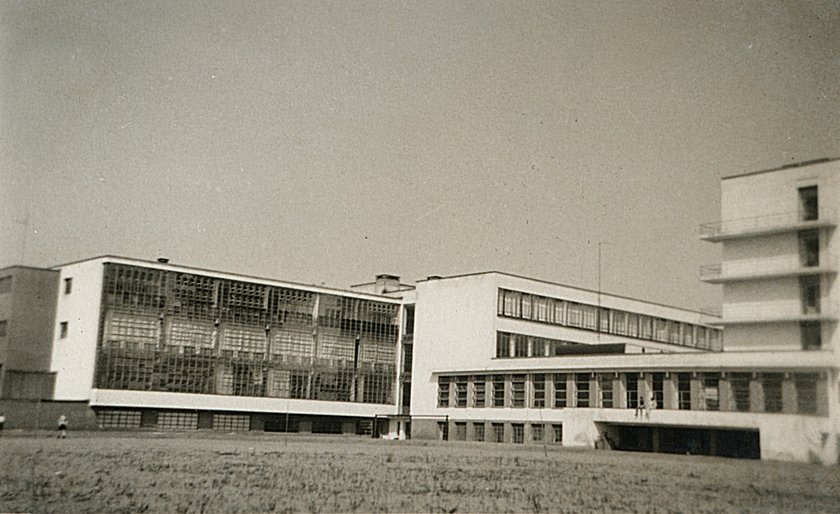
แม้ว่าคอนกรีตเสริมเหล็กและกระจกจะเป็นวัสดุยอดนิยมของสถาปนิกในยุคสมัยใหม่ แต่ในฝั่งอเมริกา การใช้วัสดุเหล็กกับกระจกเป็นการจับคู่ของวัสดุทางสถาปัตยกรรมสมัยใหม่ที่ได้รับความนิยมเป็นอย่างมาก หลังจากที่บาวเฮาส์ในเยอรมนีได้ปิดตัวลงจากความคิดที่ไม่ลงรอยกับนาซี เหล่าสถาปนิกสายบาวเฮาส์จำนวนมากได้โยกย้ายมาสร้างผลงานที่สหรัฐอเมริกา งานเหล็กกับกระจกได้แพร่หลายและพัฒนามากขึ้นที่นี่ อย่าง Farnsworth House ในอิลลินอยส์เมื่อปี 1951 โดย Ludwig Mies van der Rohe บ้านหลังนี้เป็นจุดเด่นของยุคสมัยใหม่ที่ใช้กระจกอย่างสุดกำลังของวัสดุ ผนังกระจกถูกเปิดโล่งจากพื้นจรดโครงสร้างเหล็กหลังคา เมื่อมองเป็นรูปด้านจะพบเพียงเส้นของเหล็กบางๆ คุมเป็นเส้นนอนหลักของบ้าน โดยมีกระจกเป็นวัสดุหลักที่โดดเด่น ส่วนใช้สอยทั่วไปที่จะชิดผนังภายนอกอย่างห้องน้ำ ส่วนบริการถูกผลักไปอยู่กลางบ้าน ทำให้ภาวะการเชื่อมโยงภายนอกและในเกิดขึ้นอย่างเต็มที่จากผนังกระจกโดยรอบ ก่อเกิดความโปร่ง เบาลอย การออกแบบโดยการเก็บรายละเอียดอย่างดี ทำให้เรือนกระจกนี้เป็นตัวอย่างของการมองทะลุ เชื่อมต่อที่ว่างภายนอกและภายในอย่างดีเยี่ยม แม้จะมีปัญหาเรื่องการใช้งานในเวลาต่อมาก็ตาม จากความชำนาญด้านการออกแบบด้วยกระจกของ Mies ได้ต่อยอดสู่การออกแบบอาคารสูงในนิวยอร์ค เมื่อปี 1958 เขาร่วมกับ Philip Johnson, Ely Jacques Kahn และ Robert Allan Jacobs ในการออกแบบอาคาร Seagram Building ที่มีเปลือกอาคารหุ้มด้วยกระจกสีดำประมาณ 11,300 ตารางเมตร ซึ่งทนความร้อนและแสงสะท้อน มีแผงกระจกลักษณะเรียบ แต่สถาปนิกออกแบบรายละเอียดด้วยกรอบโลหะตัว I บรอนซ์ขนาด 110 x 150 มิลลิเมตร ให้วางแนวตั้งเป็นหลักรอบเปลือกอาคาร ช่วยเสริมสัดส่วนอาคารให้ดูชะลูดมากขึ้นด้วยกรอบบรอนซ์ทำสีดำ
ในช่วงเวลาไม่นานที่ผ่านมานี้ วัสดุทำกระจกที่มาจากแก้ว ยังถูกประยุกต์ต่อยอดเป็นวัสดุอื่นในคุณสมบัติให้แสงลอดผ่าน มองทะลุผ่านได้ตามที่ออกแบบพื้นผิวให้หักเหแสงมากหรือน้อย อย่างที่เห็นได้จากงาน Maison Hermès โดย Renzo Piano ในย่านกินซ่าของโตเกียว สร้างเมื่อปี 1998 เป็นอาคารหน้ากว้างราว 10 เมตร สัดส่วนเน้นไปทางสูงสะดุดตาด้วยเปลือกอาคารที่ถูกสร้างขึ้นจากบล็อกแก้วกว่า 13,000 ก้อน ซึ่งบล็อกแก้วเหล่านี้ถูกออกแบบเป็นพิเศษและพัฒนาโดย Renzo Piano ร่วมกับโรงงานผลิตแก้ว Vetroarredo ในเมืองฟลอเรนซ์ อิตาลี คุณสมบัติทางกายภาพของบล็อกแก้วต่างจากกระจกใสอย่างเห็นได้ชัดในเรื่องของมุมมองที่ไม่อาจมองทะลุผ่านได้ชัดเจน ด้วยความคลุมเครือ มองเห็นภายในเพียงเค้าโครงของวัตถุ แต่ในขณะเดียวกันก็ปล่อยให้แสงสว่างลอดผ่านไปมาได้ จากคุณสมบัติข้อนี้ ทำให้ Maison Hermès เป็น flagship store ที่สร้างความเป็นส่วนตัวให้กับลูกค้าจากการลดการจับจ้องจากภายนอก ในขณะเดียวกันอาคารยังกลายเป็นประติมากรรมโคมไฟส่องสว่างให้กับย่านกินซ่าในยามค่ำคืน การออกแบบรายละเอียดของเปลือกก็พิเศษด้วยการป้องกันความเสียหายจากแผ่นดินไหว ที่ออกแบบให้ผนังบล็อกแก้วยึดกับโครงเหล็กที่สามารถเคลื่อนตัวได้ยามเกิดแผ่นดินไหวอย่างกระจายอย่างสม่ำเสมอทั่วทั้งโครงสร้าง 4 มิลลิเมตร ป้องกันไม่ให้อาคารพัง
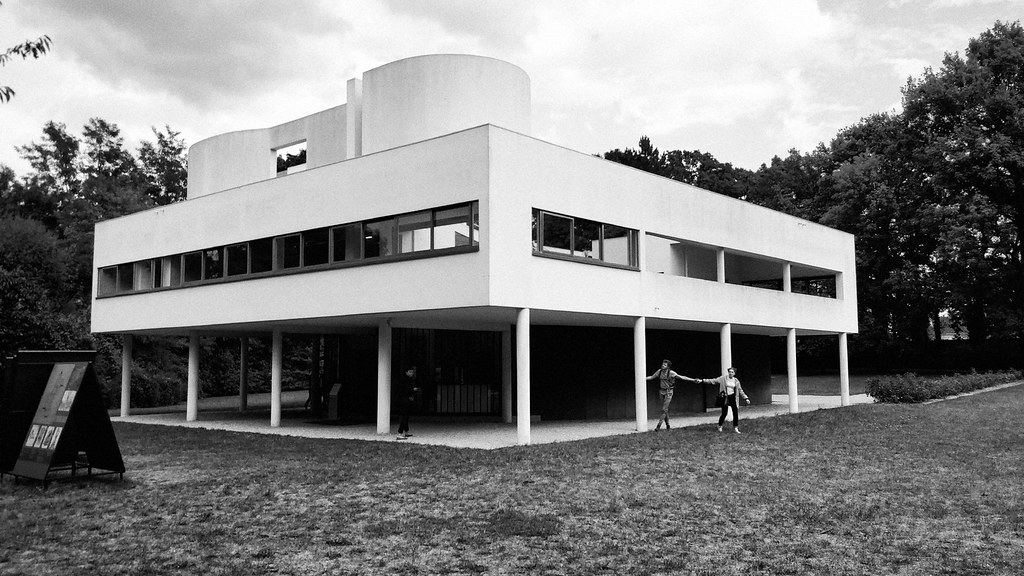
นอกจากประเด็นของการอ่านพื้นที่ภายนอกและภายในด้วยวัสดุอย่างกระจกแล้ว ความโปร่งใสของกระจกสามารถวางตัวมันเองลงบนเรื่องราวใหม่ของสถาปัตยกรรมและเมืองได้ด้วยเช่นกัน ดังเช่นงานออกแบบปรับปรุงอาคารรัฐสภา Reichstag ในเบอร์ลิน ในปี 1992 โดย Norman Foster จากอาคาร Reichstag เดิมที่เป็นแบบนีโอคลาสสิคซึ่งเริ่มใช้งานในปี 1884 ถึงคราวร้างการใช้งานจากความเสียหายเมื่อสงครามโลกครั้งที่ 2 ด้วยการพ่ายแพ้ของกองทัพเยอรมัน และในที่สุดเมื่อมีการออกแบบปรับปรุงใหม่ด้วยการลบคราบเก่าให้หายไป แต่ Foster เลือกเก็บร่องรอยของตัวหนังสือจากกองทัพโซเวียตฝากไว้ด้วยความแค้น เพื่อย้ำเตือนถึงอดีต และทำสิ่งที่ต่างไปจากขนบของการออกแบบรัฐสภาคือการใช้กระจกเข้ามาแทนที่ ด้วยการออกแบบโดมกระจกครอบพื้นที่กลางอาคาร และพื้นที่ใต้โดมถูกจัดวางเป็นพื้นกระจกมองทะลุผ่านไปยังเบื้องล่างที่เป็นห้องประชุมของรัฐสภา ส่วนด้านบนที่เปิดให้ผู้มาเยี่ยมชมโดมนี้มองเห็นกิจกรรมการประชุมได้อย่างชัดเจน เพื่อสื่อถึงความโปร่งใสและการตรวจสอบได้ ทำให้รัฐสภาเป็นสถาปัตยกรรมที่ผู้คนเข้าถึงได้มากกว่ากีดกันปิดกั้นประชาชนออกจากการเมือง ความโปร่งใสนี้จึงกลายเป็นเครื่องมือสื่อความหมายทางนามธรรมที่สถาปนิกใช้ในการสื่อสารถึงการเมืองไปพร้อมกับรูปธรรมกายภาพของอาคาร
ในขณะเดียวกัน พัฒนาการของการใช้กระจกและความคิดสร้างสรรค์ของสถาปนิก ยังถูกนำมาสร้างมุมมองใหม่ให้กับเมืองและอาคารเก่าได้ ดังกรณีของ Elbphilharmonie ออกแบบโดย Herzog & de Meuron เปิดใช้งานในปี 2017 เพื่อรองรับหลายกิจกรรมทั้งพื้นที่ทางวัฒนธรรม โรงละคร โจทย์คือการออกแบบปรับปรุงอาคารคลังสินค้าของเมืองท่าฮัมบูร์ก เยอรมนี ให้พื้นที่ใช้งานใหม่วางตั้งอยู่บนอาคารเก็บสินค้าเก่าเป็นกล่องอิฐเปลือยที่อนุรักษ์ไว้ Herzog & de Meuron ได้สร้างลูกเล่นกับส่วนยอดด้วยรูปทรงกล่องเรียบ ปาดส่วนบนของกล่องกระจกด้วยเส้นโค้งเว้าหลายเส้น พร้อมกับสร้างรายละเอียดที่ผิวด้วยเทคนิคทำให้กระจกมีพื้นผิวที่ไม่สม่ำเสมอด้วยเส้นโค้งตลอดทั้งสี่ด้าน บางส่วนที่เป็นระเบียงใช้วิธีเจาะกระจกโค้ง มองในภาพรวมมันคือการสร้างเส้นขอบฟ้าใหม่ให้กับเมืองด้วยลูกเล่นกับกระจกสะท้อนแสงสีเทาดูระยิบระยับ ซึ่งจะช่วยป้องกันโครงสร้างไม่ให้ร้อนขึ้นเนื่องจากแสงแดด ซึ่งเป็นการตอบสนองต่อข้อวิพากษ์ของวัสดุกรอบอาคารประเภทนี้ต่อสภาวะโลกร้อนที่เป็นภัยคุกคามต่อสิ่งแวดล้อมมากขึ้น
Photo Courtesy of Darren Bradley Photo Courtesy of Darren Bradley
เมื่อเทคโนโลยีของการผลิตก้าวหน้าขึ้นในปัจจุบัน การสร้างความโปร่งใสยังสามารถสื่อถึงความปลอดภัยจากการมองเห็นและสร้างความรู้สึกเป็นส่วนตัวไปด้วยกัน นิยามใหม่ของความปลอดภัยที่ดูขัดแย้งกันเมื่อวัสดุที่ใช้เป็นกระจกใสอย่างที่ Shigeru Ban ได้ออกแบบ Haru-No-Ogawa Community Park Toilet ในโตเกียวไว้เมื่อปี 2020 โดยใช้เทคโนโลยีปรับความขุ่นของกระจก ทำให้ในเวลาที่ไม่มีการใช้งานผนังกระจกจะโปร่งใส สามารถมองเห็นภายในได้ชัดเจน สามารถรับรู้ได้ว่ามีใครอยู่ภายในหรือไม่ จนเมื่อเข้าไปใช้ห้องน้ำ ผนังกระจกจะเปลี่ยนความขุ่นจนคนภายนอกไม่สามารถมองเห็นได้ เกิดความเป็นส่วนตัวภายใน การนำเทคโนโลยีมาประกอบใช้กับกระจกนี้ช่วยให้ความหมายของการใช้พื้นที่สาธารณะเปลี่ยนแปลงไปอีกด้วย
นอกจากวัสดุอย่างแก้ว กระจก วัสดุจำพวกพลาสติกเองก็สามารถสร้างการทะลุผ่าน ให้เกิดความรู้สึกโปร่งใสและโปร่งแสงได้เช่นกัน ด้วยน้ำหนักที่เบากว่า เทคนิคที่แตกต่าง ช่วยสร้างผลลัพธ์ที่ต่างออกไป ซึ่ง Little Shelter Hotel ในเชียงใหม่ ที่ Department of Architecture ได้ออกแบบไว้อย่างน่าสนใจ นอกจากจะเลือกใช้ผิวอาคารโปร่งแสงสำหรับอาคารประเภทโรงแรมในบริบทเมืองเก่าแทนที่จะเป็นวัสดุในท้องถิ่นแบบที่นิยม สถาปนิกออกแบบเปลือกผนังรอบอาคารด้วยแผ่นโพลีคาร์บอเนตที่มีความขุ่น สามารถให้แสงผ่านได้แบบกระจายแสง ทำให้พื้นที่ภายในมีการตัดขาดจากภายนอก แต่ดึงแสงธรรมชาติเข้ามา และอาคารยังส่องสว่างกลายเป็นโคมไฟในเวลากลางคืน การออกแบบรายละเอียดทำโดยการตัดแผ่นโพลีคาร์บอเนตให้มีขนาดเดียวกับแผ่นหลังคาไม้ชิงเกิล กรุด้วยเทคนิคแบบไล่ระดับความเข้มจางจากบนลงล่าง ซึ่งช่วยแก้ปัญหาของการใช้แผ่นโพลีคาร์บอเนตขนาดปกติติดตั้งเป็นผนัง ซึ่งอาจจะเกิดคลื่น ทำให้เกิดผลลัพธ์ของผนังโปร่งแสงมีความเป็นประกาย มีพื้นผิวที่ล้อไปกับกระเบื้องหลังคาแบบประเพณี จากการดัดแปลงวัสดุทั่วไปในท้องตลาด
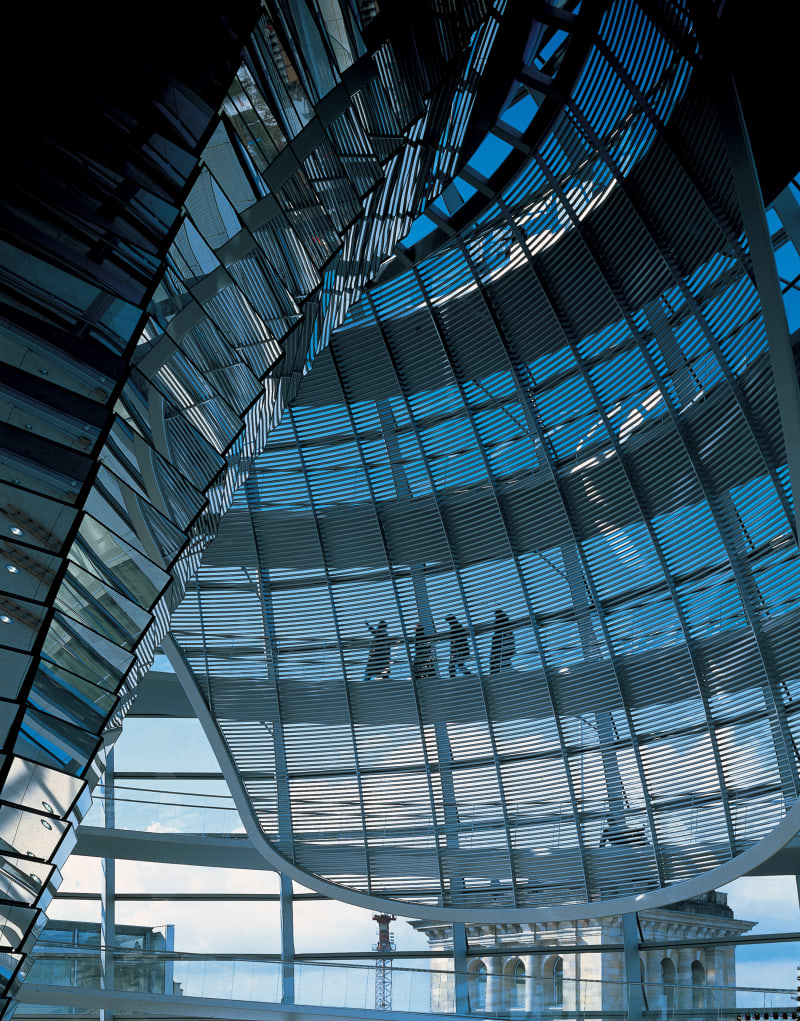
หรือวัสดุอย่างบล็อกแก้ว เป็นวัสดุคุ้นเคยของไทยที่พบได้ทั่วไป มักใช้เป็นช่องแสงราคาไม่แพง แต่เมื่อรู้จักการดัดแปลงวัสดุให้เข้ากับเทคนิคก่อสร้างด้วยความคิดสร้างสรรค์ ก็สามารถสร้างความโดดเด่นให้กับสถาปัตยกรรมได้ อย่างการใช้บล็อกแก้วทำหน้าที่เป็นวัสดุหลักในงานออกแบบ The Chapel โดย Bangkok Project Studio ซึ่งเป็นบูธของ art4d ในงานสถาปนิก’18 บล็อกแก้วทำหน้าที่เป็นตัวแบ่งพื้นที่ภายในบูธออกจากทางเดินรอบนอก พร้อมไปกับการดึงแสงเข้ามาในบูธ ทำให้การรับรู้มีความไม่ชัดเจน จนเกิดความสงบภายใน ในงานนี้สถาปนิกได้ดัดแปลงมอร์ตาร์สีขาวระหว่างบล็อกแก้วที่เราคุ้นเคย ให้ถูกแทนที่ด้วยไม้ยางนา ต่อมาในปี 2021 ผศ.บุญเสริม เปรมธาดา ได้เสนอการดัดแปลงบล็อกแก้วเป็นเปลือกหลักของอาคาร โดยรายละเอียดที่มีแนวคิดเดียวกันอีกครั้งในงานออกแบบร้านอาหาร The Artisans Ayutthaya ที่พระนครศรีอยุธยา ด้วยการใช้บล็อกแก้วประกอบเข้ากับโครงเหล็กกล่องขนาด 50x50x3 มิลลิเมตร ประกบเข้ากับแผ่นเหล็ก 6 มิลลิเมตร จากนั้นกรุทับรอยต่อด้วยไม้แทนมอร์ตาร์แบบเดิม เป็นการดัดแปลงและนำจุดเด่นของวัสดุที่คุ้นเคยด้วยการออกแบบรายละเอียดใหม่ ให้เกิดภาพลักษณ์ใหม่ที่น่าสนใจ
Photo Courtesy of Foster and partners Photo Courtesy of Foster and partners
สถาปัตยกรรม การมองทะลุผ่าน และความโปร่งใส จึงหลอมเข้าด้วยกันมาเป็นเวลาหลายศตวรรษ เพื่อการพัฒนาคุณภาพให้กับการใช้ชีวิตของมนุษย์ในหลากมิติ ที่ว่างภายในที่มีแต่ความสลัว อับทึบ ถูกทลายลงด้วยการอนุญาตให้แสงเข้ารังสรรค์ที่ว่างภายใน จนถึงปัจจุบัน วัสดุโปร่งใสได้ถูกพัฒนาไปตามเทคโนโลยีโดยตลอดมา จากทำหน้าที่ให้แสง สายตาทะลุผ่าน หลอมรวมไปกับเทคโนโลยีทางด้านประหยัดพลังงาน สร้างพลังงานจากแสงอาทิตย์ กลายเป็นจอฉายภาพบอกเรื่องราว เปลี่ยนความเข้มจางตามการใช้งาน และแน่นอนว่าในอนาคต เรายังคงจะได้พบคำตอบอันหลากหลายของวัสดุโปร่งใสที่คาดไม่ถึงจากการสร้างสรรค์ที่ไม่หยุดในงานสถาปัตยกรรมต่อไป
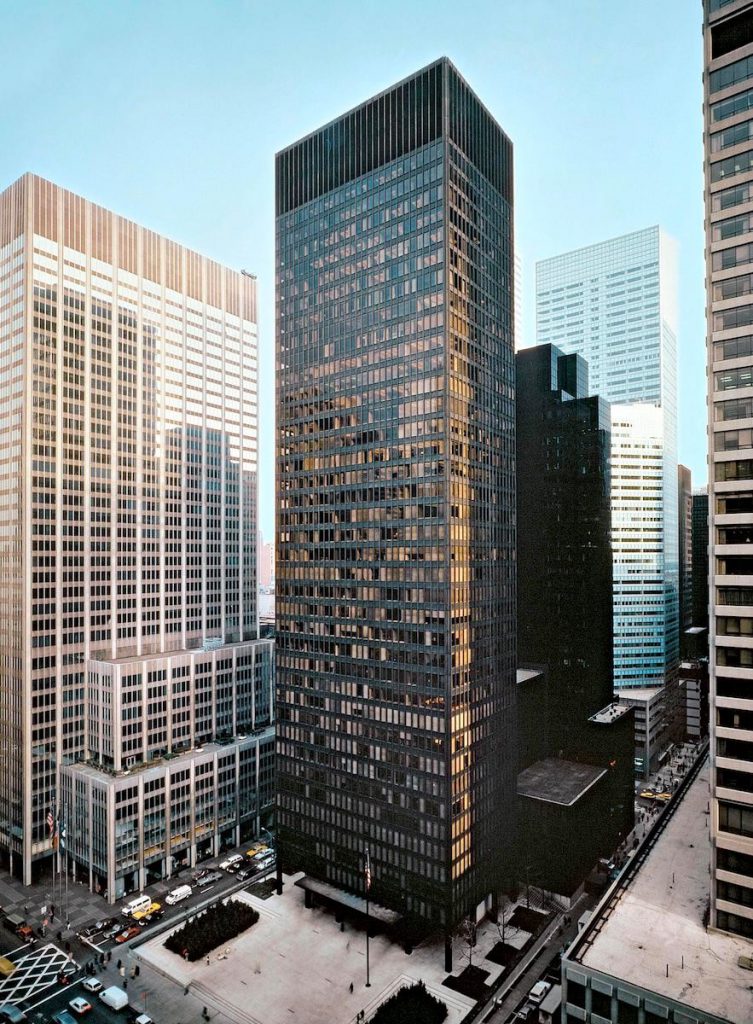
Although humans have known the use of glass for thousands of years, the material was first introduced to architecture only 800 years ago in the western world in the form of stained glass of churches and religious buildings. The material’s popularity dwindled during the Renaissance Era before it became widely used again during the Gothic Revival in the 19th Century. The succeeding widespread use of glass in architectural application was a result of the Industrial Revolution, which makes it safe to say that glass is a material born from the modernized world.
The use of glass as a building material, which was rather limited in the western world due to the cold weather, has seen significant growth since the invention of heaters. The innovative manufacturing technology of heaters enabled a significant increase in the number of glass produced, as the material has been applied to more architectural projects. Glass’ ability to link the interior and exterior spaces exceeds the imagination of architects from the previous century. In turn, more interesting stories and developments of ‘seeing through’ have emerged and are waiting to be explored through various shifts in technological advancement, evolution of material and the concept of transparency in architecture.
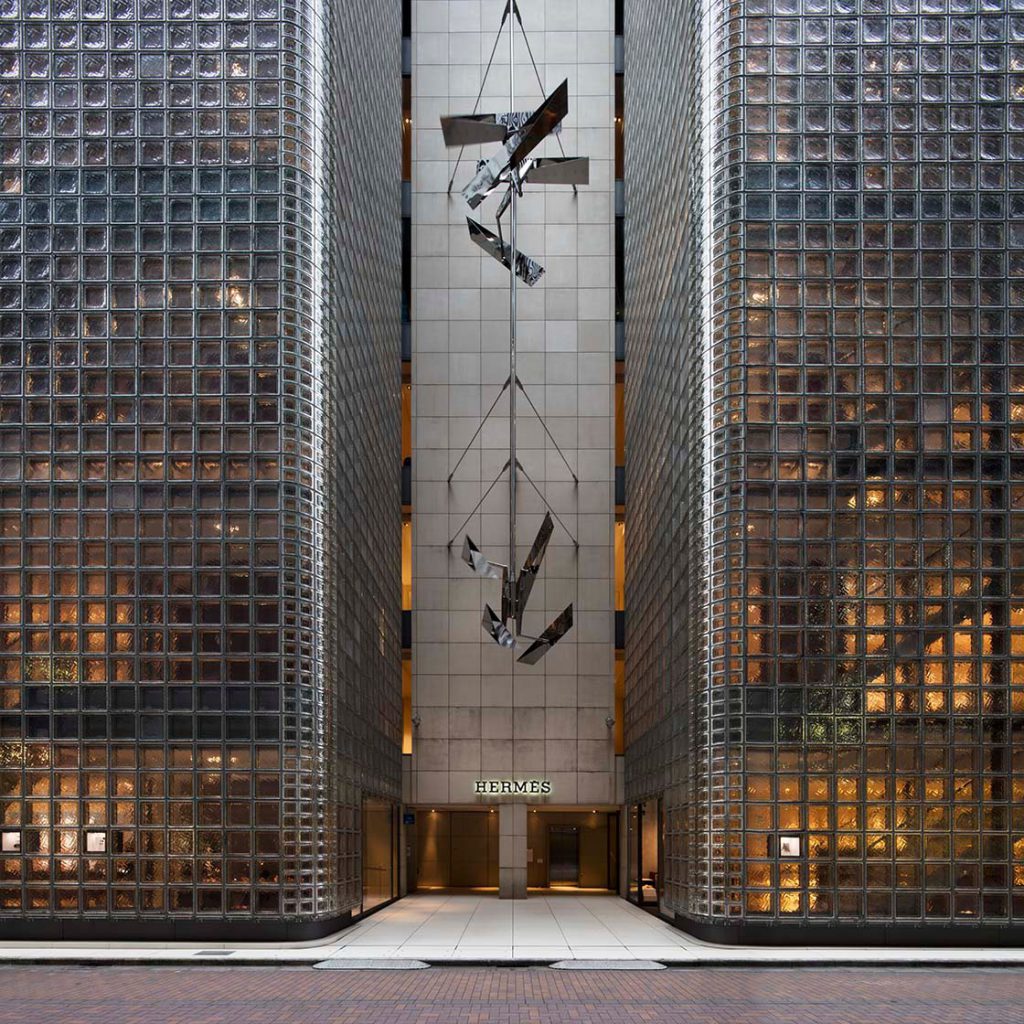
When Joseph Paxton designed the Crystal Palace in London in 1851 to host The Great Exhibition that would showcase the technological progresses that had happened during the Industrial Revolution, the idea he had for the structure originated from his attentively calculated installation of 25×120 cm. glass panels. They were produced and supplied by Chance Brothers of Smethwick and were the biggest glass panels that had ever been produced at the time. Assembled from millions of glass sheets within the span of only ten months, the structure was a massive glass box approximately 92,000 square meters in size. Following the concept of Modern Architecture, the structure can be reproduced from the prefabricated parts. The birth of Crystal Palace began to shift people’s perception toward the enclosure of architecture, which was being challenged by visibility and the incorporation of natural light. It has reimagined the design of interior spaces and influenced how architecture was conceptualized and materialized in the following century.
As the world entered the 20th Century, the progressive developments of reinforced concrete and glass manufacturing had given birth to works of architecture that embraced the use of glass to facilitate the connection between interiors and exteriors. In 1925, Walter Gropius designed the Bauhaus Building in Dessau, Germany. The structure was used as a school building for the Bauhaus School of Art, Design and Architecture, one of Europe’s most pioneering and avant-garde art schools. The project was considered to be somewhat of a continuum of the factory Gropius designed earlier. The design’s use of glass and its transparency broke away from the existing convention with the use of corner windows, which was closely associated with the Cubism movement. As notably seen through the superimposed, connected planes and movements within interior spaces at different times of day. Colin Rowe and Robert Slutzky wrote about the Bauhaus Building in their book ‘Transparency’ published in 1964. They mentioned that it reveals an interlaced sequence of spaces without any interruption that is perceivable through large glass walls which simultaneously enable the visibility of both the interiors and exteriors. Siegfried Giedion had the same opinion about the Bauhaus Building and its large-scale transparency and openness that creates and affects the relationship between interior and exterior planes.
Photo Courtesy of NIGEL YOUNG Photo Courtesy of Iwan Baan
The arrival of reinforced concrete has allowed this modern material to express its freedom in architectural design. In 1931, Le Corbusier’s Villa Savoye reflected the technological advancement of reinforced concrete and glass. As a result, it broadened the horizon for the free façade and horizontal window discourse, following what the architect himself proposed in his architecture manifesto, Five Points of Architecture.
While reinforced concrete and glass were favorable among the modernist architects, over in the United States, the pairing of steel and glass was a popular alternative in modern architecture. The Nazis placed pressure on the school and forced the Bauhaus to close down. As a result, many architects of the Bauhaus school moved to the States and started working, causing the use of steel and glass to be more popular and further developed in the region. An example of this is Farnsworth House by Ludwig Mies van der Rohe. The house encapsulates the modernist tenet with a maximal use of glass with curtain walls that run from the floor to the roof’s steel structure. The elevation reveals thin lines of steel framing of the house’s horizontal structure while glass takes the center stage. The functional spaces that would normally be located next to the exterior walls such as restrooms were pushed to the center of the house, allowing the connection between the interiors and exteriors to take place without any obstructions. The glass walls brought both the openness and weightlessness to the space. The design’s meticulous details turn the glass house into a model of transparency where the indoor and outdoor spaces are impeccably connected despite certain functional difficulties that would later ensue. Mies’ masterful use of glass was ramified into the design of a high-rise structure in New York. In 1958, he worked alongside Philip Johnson, Ely Jacques Kahn and Robert Allan Jacobs for the design of the Seagram Building whose exterior was clad with 11,300 square meters of black mirror, forming a heat and reflection resistant curtain wall with details of the glass panes set within vertical bronze mullions made from I-shaped 110×150 mm I-beams. The black color of the mullions accentuates the building’s proportion, making it seem even taller.
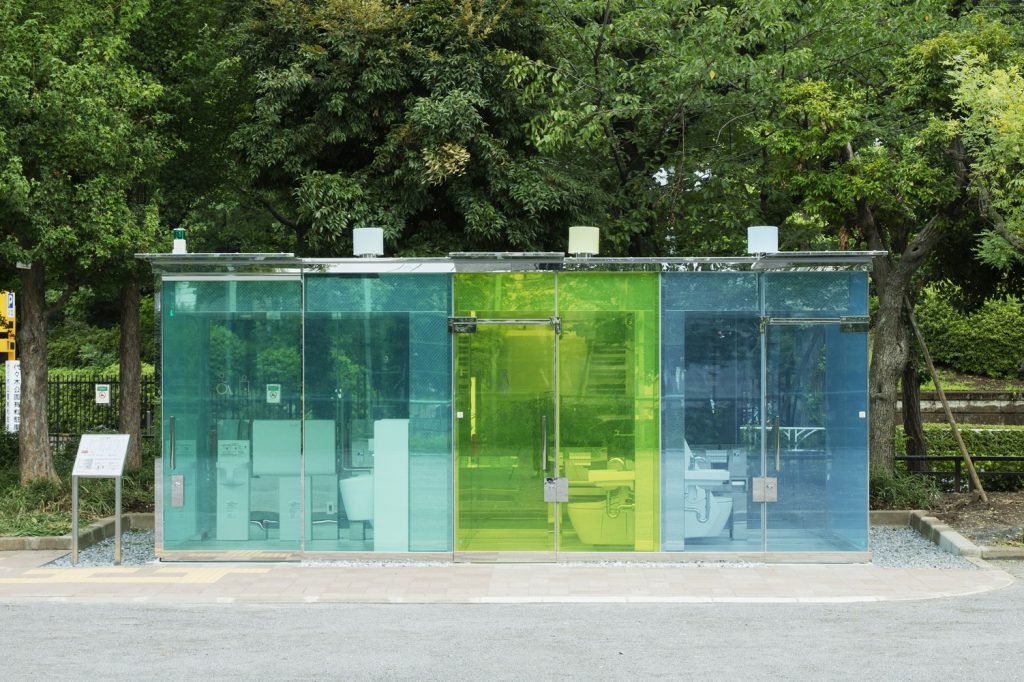
Recently, glass has been applied to the manufacturing of many other materials with special physical properties that allow light to go through or deviate in the desired fashions. Renzo Piano’s Maison Hermès in Ginza, Tokyo, constructed in 1998 is one example. With the 10-meter wide front and high proportion, the building’s façade is made from over 13,000 pieces of glass blocks, specifically designed and developed by Renzo Piano and Vetroarredo, a glass manufacturer based in Florence, Italy. The glass blocks’ physical attributes are different from those of transparent glass for their obscured transparency. Even though they allow natural light to come through, they grant limited visual access to the interior space, offering the flagship store’s clients a greater sense of privacy. At night, the building turns into an illuminating sculpture that helps light up the Ginza district allowing for it to be even more vibrant. The shell was also designed to withstand earthquakes, with the installation of glass blocks to the structure’s 4 mm.-thick metal skeleton that is flexible and resilient. It can also evenly distribute seismic shockwaves throughout the structure and prevent the building from collapsing.
Photo Courtesy of The Nippon Foundation Photo Courtesy of The Nippon Foundation
Apart from how glass has changed the way interior and exterior spaces are interpreted and interacted with, the transparent property has positioned the material in new stories of architecture and urban spaces. The design and renovation of the Reichstag Building in Berlin in 1992 by Norman Foster is an intriguing example. The building’s original neoclassical architecture built in 1884 was left devastated and unused after Second World War and the defeat of the German Army. The new renovation was intended to wipe away the traces of war, yet, Foster chose to preserve the message the Soviet Army left behind with vengeance as a reminder of the past. He took an unorthodox approach to parliament architecture with the design of the glass dome constructed on top of the rebuilt Reichstag building. The area underneath the dome is designed to have a transparent glass floor overlooking the debating chamber below, which was done so to convey the government’s transparency and accountability. The design turned the parliament building into a work of architecture that is more open to the public, instead of obstructing and preventing people’s access to politics. Transparency, in this case, became a tool that communicates an abstract meaning of politics through the building’s physical existence.
Meanwhile, the evolution of glass alongside architects’ creativity has brought about new perspectives and images to old cities and buildings. Elbphilharmonie by Herzog & de Meuron, which opened in 2017, was intended to be a cultural space that would accommodate different cultural activities such as theaters. The brief was to redesign and renovate a warehouse building in Hamburg, Germany, with the new functional program standing on top of the old warehouse building whose original brick structure was told to be preserved. Herzog & de Meuron added a gimmick to the top of the structure with the simple, boxy mass. The design gauges out the top part of the glass box with several curved lines, with additional details of the curved and cut panels of glass on all the four sides of the architectural mass including the balconies created out of concave glass walls. Looking at it as a whole, the project draws a new skyline for the port city with the playful elements of reflective gray sparkles on the surface, which comes with heat reflective property. The work becomes a part of the debate over the use of this particular type of material as a building’s facade and the effects it has on climate change and the environment.

As the manufacturing technologies continue to progress, transparency also involves a sense of privacy and security. Although it seems like a contradicting definition considering the material’s transparent property, it is in fact, made possible. Haru-No-Ogawa Community Park Toilet designed by Shigeru Ban in 2020 utilizes the adjustable opacity with the public restroom whose walls stay transparent when unoccupied, informing users of the restrooms’ vacancy. When in use, the glass walls turn opaque to the point where the inside of the restrooms become visually inaccessible, granting users the needed privacy. The utilization of modern technology with glass in this project also redefines how public spaces can be used.
In addition to materials such as glass and mirror, plastic also contains transparent and translucent attributes at a much lighter weight. A different material and technique renders a unique result at Little Shelter Hotel in Chiang Mai, Thailand, which has Department of Architecture as the architect. The design is interesting especially for its use of a translucent façade for the hotel building whose context is an old city where local, traditional materials are more popular alternatives. The architect designs a façade that is made of translucent polycarbonate, allowing natural light to be distributed into the interior space while keeping the functional program private and disconnected from the outside world. The building becomes illuminated at night, allowing it to become the neighborhood’s whimsical light sculpture. To construct the façade, the polycarbonate sheets were cut into the shape of a wooden single. The pieces were then installed to render a gradual opacity with the top part being the most opaque. The technique eliminates the uneven, wavy texture caused by using the entire polycarbonate sheets as the facade while the shingles offer the glittering effect and the textural details that reference the vernacular architecture’s traditional roofing, but with the use of a more commonly available construction material.
Photo Courtesy of W Workspace Photo Courtesy of W Workspace
Thai people are familiar with glass blocks since they are widely used as a more affordable alternative to glass openings. When an ordinary material is met with creativity, an outstanding work of architecture is created. Utilizing a creative construction technique, the design of ‘The Chapel’ by Bangkok Project Studio for art4d Magazine at 2018’s ASA Expo created a maze-like space made of glass blocks. While the boundary that separated the inside from the outside was clearly defined, the presence of natural light in the interior program created a sense of calming obscurity. The architect replaced the white mortar used as the adhesive agent of glass blocks with the structural skeleton made of Yang Naa wood. Later in 2021, Assistant Professor Boonserm Premthada used glass blocks as a building shell once again with the design of the restaurant, The Artisans Ayutthaya, in Ayutthaya, Thailand. The glass blocks are assembled with 50x50x3 mm. steel bar frame and 6-mm thick steel plates. Similar to ‘The Chapel’, the joinery is clad with wood instead of mortar, showcasing the use of simple materials with new details to render a refreshing and exciting outcome.
Architecture, seeing through and transparency have been integrated, fused and developed through centuries of evolution in the hopes of improving and diversifying humans’ living standard and experiences. Enclosed, dark and dungy interior spaces have, over time, been challenged and destroyed with the presence of natural light brought about by humans’ creative and innovative use of glass. Transparent materials have been developed and continue to bring innovations as manufacturing technologies continue to progress. Their abilities are broadened from granting visual transparency with varying levels of opacity, improved energy saving efficiency to generating solar power and becoming a screen for moving images. Undoubtedly, we will discover many more unexpected answers from transparent materials in the future. Bringing forth new answers and possibilities that go beyond the realm of architecture.



